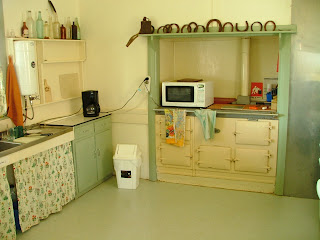Located in far western NSW and just east of Tibooburra, It is an experience that will both shock and delight. Now a national park, the park expands across incredible desert country right up to the QLD border and SA border.

Roads through Mt Wood
The Manager of this region Dr Ingrid Wittes work in the park is worthy of note. Simply this- she runs the park, its staff, large machinery and infrastructure. All on a shoe string budget and yet still has time to have international students, run valuable scientific studies, and keep the homestead looking fantastic

Troopie on a salt lake
You will learn a lot. Its that simple. There are a number of ways to get there, light plane, bus or four wheel drive. The routes are simple:- Broken Hill north along the Silver City Highway,which is a mixture of tar and dirt. Or west from Bourke along the Highway which is simply sand and rock.

A word of advice, if it rains stay put. The roads turn to glue with just a light drizzle, and you will find yourself stranded. Wait 24 hours and they dry out again...
Also if you plan a trip in a four wheel drive carry 2 spare wheels, enough water to last for the number of people (e.g. 10 litre per day per person). It is not uncommon not to see anyone for a couple of days. Mobile phones do not work at all, not even in the town of Tibooburra, so a good UHF and/or a satellite phone is recommended. Basic precautions are whats needed and you will enjoy such a place. It is interesting to note that the highest form or death or injury in the outback is due to a lack of 2 spares and water.
One of the nicest things about Mt Wood is the gardens that Ingrid has put in. They make a stunning backdrop against the harsh realities of the surrounding area.

Also surprising is the stations rubbish dump. I know what you are thinking, but if you have any understanding of motor vehicles you can see a direct link to the prosperity of the place and just how/when it went broke.
Most of the vehicles date 1930-1960. Simply put; the rubbish dump is 5 acres of carts, cars, beer bottles, broken toys, windmills, and fencing. I could not help but to think about the previous owners, their life, their prosperity and decline.

I wandered the shearing shed, the shearing quarters and farm tank. By the way, don't think of a tank as a steel or concrete drum. A tank on an Australian station is a HUGE hole in the ground in which artesian bore water is pumped. It irrigates paddocks, waters stock and provides water for the house hold. Wildlife has become depoendant on many of these. It was not until the 70's and 80's that the "unlimited supply" was found to be "limited". Ingrid indicated that the great Artesian Basin had dropped 15metres and the surrounding district had lost 6 feet of top soil- An environmental disaster.
 Ruins.
Ruins.Wildlife abounds with birds, reptiles and mammals using the tanks as their watering supplies. As the drought bites even harder water bird numbers have dropped by 90% since 2000.

Flocks of budgies can still be seen, as too the odd emu.
Accommodation in the homestead is comfortable and inviting. A wonderful kitchen, lounge, hot showers and plush beds make staying here really something worthwhile.

There is also wonderful camping in various place throughout the park. The colours of the area, the stars and night and its vast space create an almost luna environment.
So if you would like an outback adventure, but can only get to NSW try our far western region national parks.
For information on the Sturt Stoney Desert, or any information wildlife/research contact NSW National Parks And Wildlife Service. Briscoe St Tibooburra NSW 2880. Or phone 08 8091 3308. Dr Ingrid Witte Phd, Bsc, Hons UNSW Sydney.












